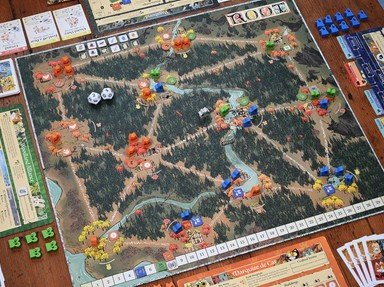Quiz Answer Key and Fun Facts
1. "Root" has a deck of cards with different suits: mouse, rabbit, fox, and which fourth suit?
2. Which faction starts a game of "Root" with a warrior in eleven of the twelve clearings?
3. Which faction can place pieces in the forests between clearings and paths?
4. Which Marquise de Cat building lets them draw more cards at the end of their turn?
5. The Eyrie Dynasties performs actions according to cards placed in its royal decree. What happens when a decree item cannot be performed?
6. The Eyrie Dynasties always has a leader that provides a bonus and seeds the decree with two Loyal Vizier cards. Which leader is the only one that puts a Vizier in the build action?
7. What effect does the Woodland Alliance's Guerrilla War ability grant?
8. The Woodland Alliance's Outrage ability forces other players to add cards to the Woodland Alliance's supporters pile. Which of the following will trigger Outrage?
Note: a sympathetic clearing is any clearing with a Woodland Alliance sympathy token in it.
9. There are ruins tokens on some of the clearings that hold items that the Vagabond can use. Which item does the Vagabond use to explore (pick up) these ruins?
10. The Vagabond has only one pawn (which is not a warrior) so it cannot be removed in a battle. What happens when the Vagabond takes damage in battle?
Source: Author
qrayx
This quiz was reviewed by FunTrivia editor
WesleyCrusher before going online.
Any errors found in FunTrivia content are routinely corrected through our feedback system.
